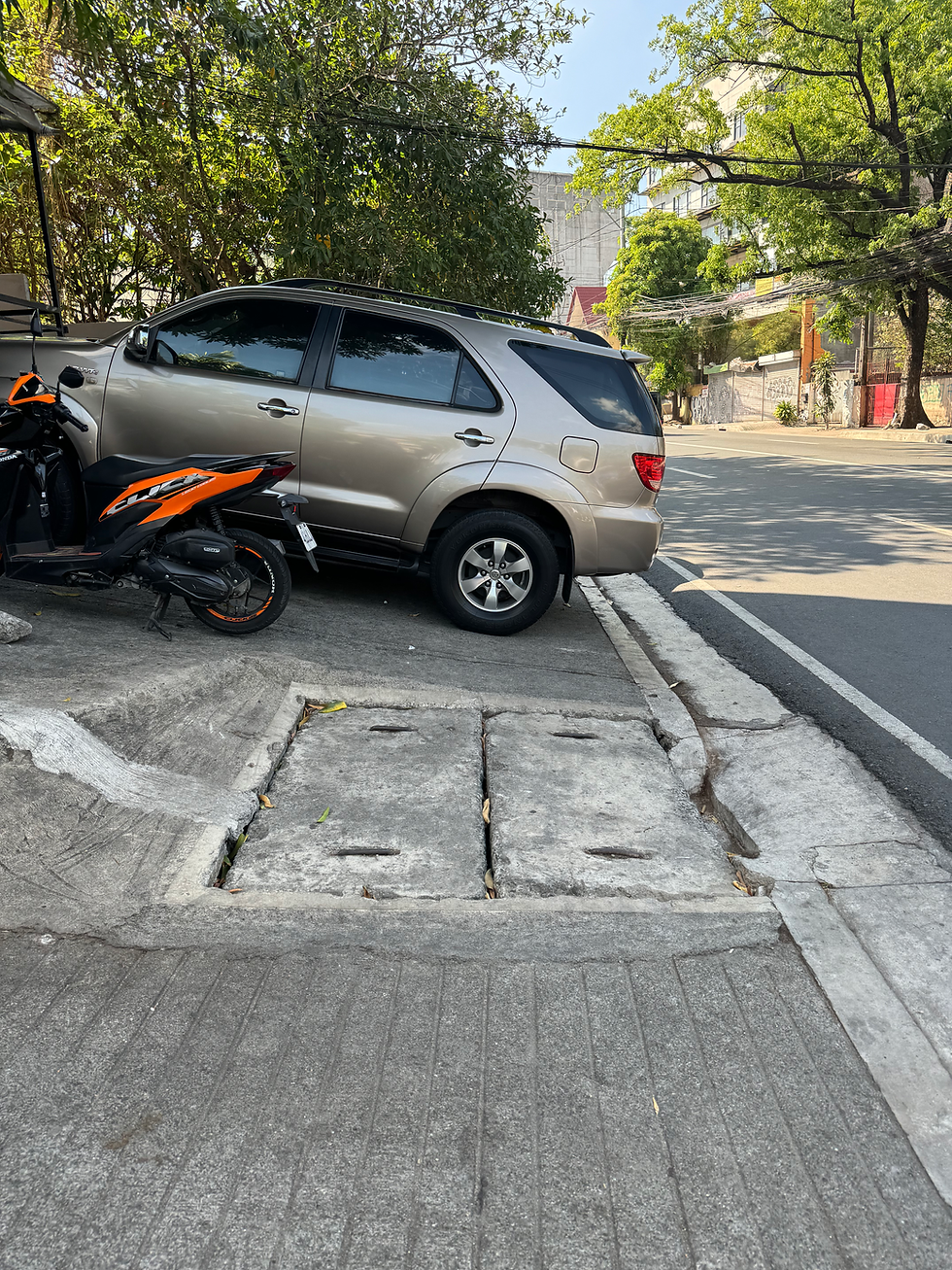Slot Wars: When Parking Spaces Attack People
- TSE
- Sep 21
- 3 min read
Updated: Oct 3
Blog from the Editor
(Alternative title: "Parking Paks Pedestrians (PPP): How Cars Hijack Our Sidewalks")
Urban streets are complex systems where vehicles, pedestrians, and public space interact. (Bookish words!) Complex? Not always--some aspects of our street lives are simply stupid. Here's one: In the Philippines, regulatory attention from supply to sizes and road space use is highly skewed toward public transport vehicles, while the ecosystem around private vehicles is experiencing a free market boom.
Modern Public Utility Vehicles (PUVs) under the Public Transport Modernization Program (PTMP) must comply with Philippine National Standards (PNS) for dimensions, passenger capacity, standing height, GPS and other tech, and accessibility. Retrofitting traditional jeepneys to meet these standards is technically challenging: they must provide a minimum of 22 passengers, adequate standing height, and space for mobility-impaired passengers. The rigidity of some of these requirements, while improving safety and service quality, creates significant barriers for small operators. (Ironically, this favors the acquisition of more expensive, loan-based PUVs resembling minibuses.)

In contrast, private vehicles face minimal real regulation regarding road space usage and parking impacts. Freedom! SUVs, vans, and pickups frequently occupy sidewalks or encroach on pedestrian paths due to non-compliance with minimum parking standards (at least 2.5 m × 5.0 m slots). Further, these exisiting smaller slots, designed decades ago for smaller sedans, fail to accommodate newer and larger private cars, forcing pedestrians to walk in traffic. This regulatory asymmetry produces negative externalities: pedestrian risk, congestion, and inefficient use of public space.

Our streets are shared spaces, yet the burden of compliance falls mostly on pedestrians and public transport operators/workers, while private vehicles rarely shoulder accountability for the space, safety, and environmental costs they impose.
Several jurisdictions have addressed these issues more systematically:
United States (our car-centricism big brother): Local parking codes often differentiate between compact and standard/large spaces, ensuring vehicles fit safely and efficiently while protecting pedestrian corridors.
Japan: Vehicle registration requires proof that a car fits its allocated parking space and within 2 km of residence, preventing sidewalk encroachment and limiting oversized vehicles in dense areas (check: Shako Shomeisho/Proof of Parking Certificate).
Singapore: Off-street parking is strictly separated from pedestrian walkways, with heavy fines against sidewalk obstruction (70 SGD or around PhP3,000 for the first offense only).
These examples illustrate that vehicle-size alignment with infrastructure is not only feasible but critical for urban efficiency and just public space use, and pedestrian-friendly city cullture. Applying similar principles in the Philippines could involve:
Classifying old parking slots for compact vehicles only and directing larger vehicles to expanded or off-site parking.
Strict enforcement mechanisms such as thorough building permits review, fines, towing, or immobilization to ensure compliance.
Integrating pedestrian right-of-way into parking and road design standards, prioritizing safe, continuous sidewalks over additional vehicle storage.
The devil is in the details: a true public-private partnership (PPP)--whether a billion-peso project or regular commercial establishment operation--that ignore these mechanisms end up making life harder for many.
Finally, national policy reform should also consider the broader implications of road occupancy by private vehicles, including congestion, prioritization of public transport efficieny, and livability. Streets are public assets, and vehicle regulation must balance private convenience with public welfare.




